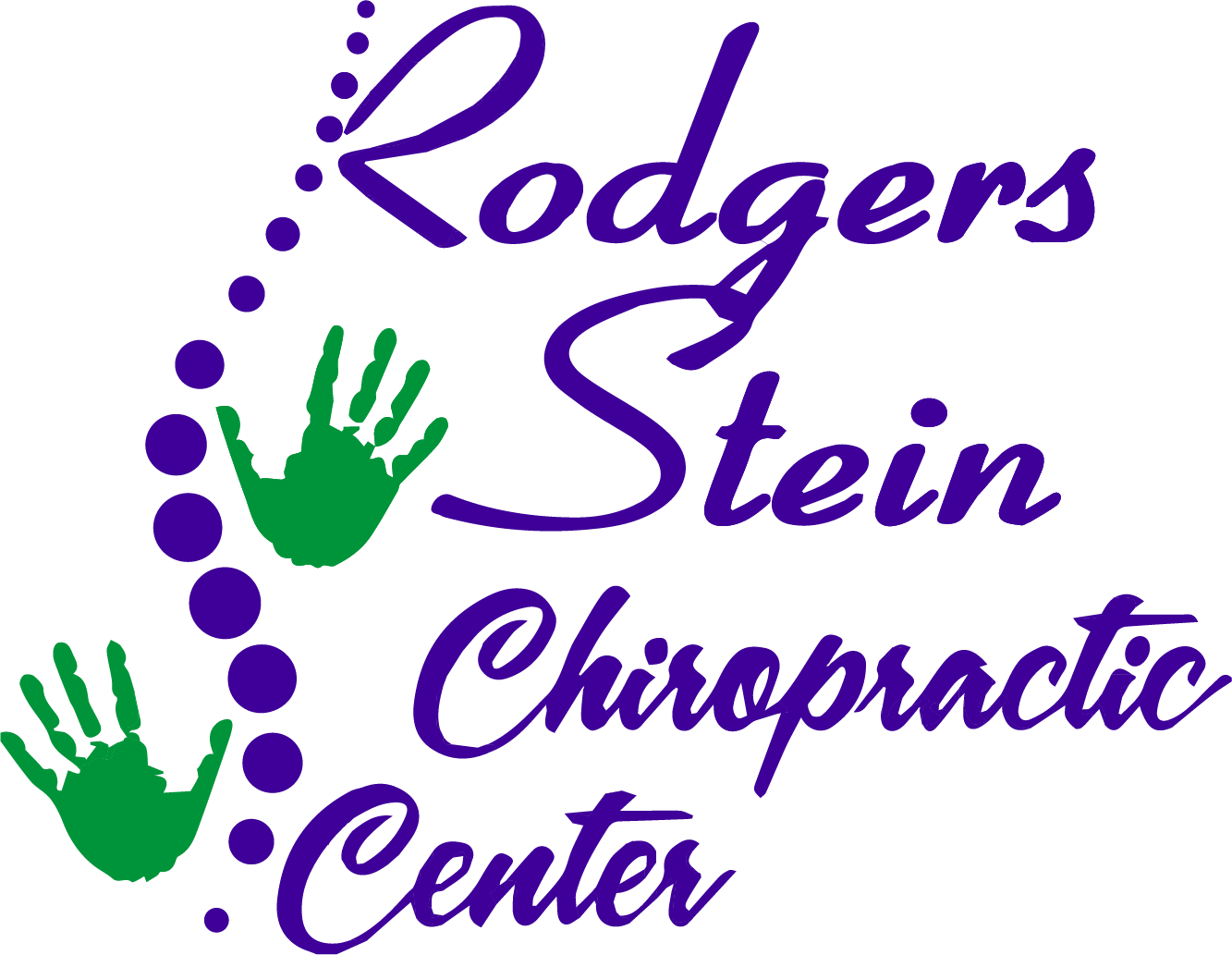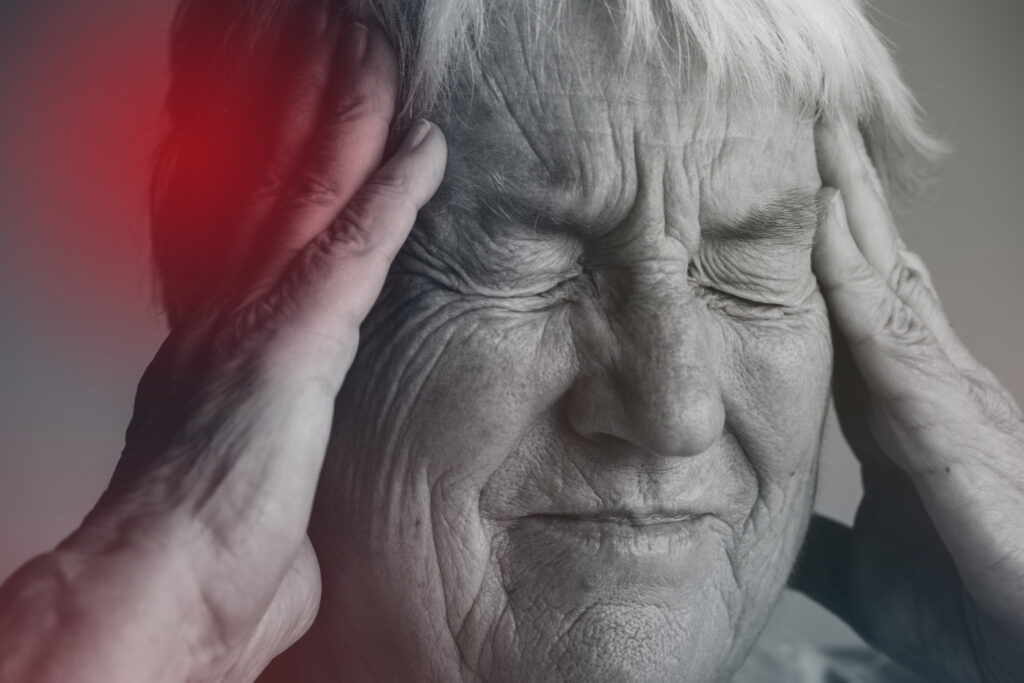If you're struggling with chronic tension headaches, you're not alone, and finding relief can feel challenging. You might want to start by identifying your specific triggers and incorporating simple lifestyle changes. Practicing effective stress management, ensuring proper hydration, and maintaining good posture are just a few strategies that could make a difference. But there are also some less obvious tips that might surprise you and greatly impact your comfort. Let's explore these approaches to help you regain control over your well-being.
Identify Triggers
Have you ever wondered what sparks your chronic tension headaches? Identifying triggers is key to managing and reducing the frequency of these painful episodes. Start by keeping a detailed headache diary. Jot down when your headaches occur, their intensity, and any accompanying symptoms. This information will help you spot patterns and pinpoint potential triggers.
Common culprits often include stress, dehydration, poor sleep, and specific foods. Stress can cause muscle tension, leading to headaches, so take note of your emotional state when the pain strikes. If you find that stress is a frequent trigger, consider incorporating relaxation techniques into your routine.
Dehydration is another common factor, so keep track of how much water you drink daily; aim for at least eight glasses.
Don't overlook sleep quality, either. Inconsistent or inadequate sleep can wreak havoc on your body and lead to increased headache frequency. If you notice a correlation between poor sleep and your headaches, focus on establishing a regular sleep schedule.
Certain foods, like aged cheeses, processed meats, or caffeine, can also trigger headaches. Experiment by eliminating these items from your diet one at a time to see if your symptoms improve.
Practice Good Posture
Maintaining good posture can greatly impact the frequency and severity of your chronic tension headaches. When you slouch or sit in awkward positions for extended periods, you strain your neck and shoulder muscles, which can lead to increased tension and pain. By being mindful of your posture, you can help reduce that discomfort.
Here are three simple tips to improve your posture and potentially alleviate some of your headache pain:
- Align Your Head: Your head should be stacked directly over your spine. Make a conscious effort to keep your ears aligned with your shoulders. This helps distribute weight evenly and reduces strain on your neck.
- Use Supportive Seating: If you spend long hours sitting, invest in a chair that supports your lower back. Guarantee that your feet rest flat on the floor, and your knees are at a right angle. This can help decrease tension in your back and neck.
- Take Breaks and Stretch: Don't forget to take regular breaks from sitting. Stand up, stretch your arms and neck, and move around. This not only helps improve circulation but also releases built-up tension in your muscles.
Stay Hydrated
Staying hydrated plays an essential role in preventing chronic tension headaches. When you don't drink enough water, your body can become dehydrated, leading to various symptoms, including headaches. It's easy to overlook hydration, especially when you're busy or caught up in daily tasks, but making a conscious effort to drink enough fluids can greatly impact your overall well-being.
To stay properly hydrated, aim for at least eight 8-ounce glasses of water a day, but remember that your individual needs may vary based on factors like activity level, climate, and overall health. Carrying a reusable water bottle can serve as a reminder to sip throughout the day. You might also consider setting reminders on your phone to help you stay on track.
Incorporating water-rich foods into your diet is another effective way to boost your hydration levels. Fruits like watermelon, oranges, and strawberries, as well as vegetables such as cucumbers and lettuce, can contribute to your daily water intake.
Be cautious with caffeinated and alcoholic beverages, as they can contribute to dehydration. If you consume these drinks, balance them out with extra water.
If you notice the onset of a headache, take a moment to assess your hydration. Drinking a glass of water might provide the relief you need.
Manage Stress Effectively
How can you effectively manage stress to help alleviate chronic tension headaches? Managing stress isn't just about finding quick fixes; it's about adopting practices that promote long-term well-being. When you're stressed, your muscles tighten, leading to those painful headaches. Here are a few strategies you can implement right away:
- Practice Mindfulness: Take a few moments each day to focus on your breath. This simple act can help ground you, reduce anxiety, and create a sense of calm. Even just five minutes can make a difference.
- Set Boundaries: Don't be afraid to say no. Overcommitting yourself can lead to stress overload. By prioritizing your time and energy, you can create a more manageable schedule that allows for relaxation.
- Connect with Others: Reach out to friends or family members. Sharing your feelings can lighten your emotional load and provide support. Sometimes, just talking it out is all you need to feel a little lighter.
Implementing these strategies can help reduce your stress levels, leading to less tension in your head and neck.
Remember, managing stress is a journey, not a sprint. Be patient with yourself as you explore what works best for you. By taking these steps, you'll not only reduce your headaches but also enhance your overall quality of life.
Prioritize your mental well-being, and you'll find relief.
Incorporate Regular Exercise
Incorporating regular exercise into your routine can greatly help with chronic tension headaches.
Focus on low-impact activities like walking or yoga, which are easier on your body and still effective.
Establishing a consistent workout schedule can enhance your overall well-being and reduce headache frequency.
Choose Low-Impact Activities
Engaging in regular low-impact activities can greatly benefit those prone to chronic tension headaches.
These activities not only help reduce stress but also enhance your overall well-being. When you choose low-impact exercises, you minimize strain on your body while still reaping the rewards of movement.
Here are three activities to contemplate:
- Walking: A simple stroll can work wonders. It's a great way to clear your mind, enjoy fresh air, and get your body moving without overexertion.
- Yoga: This practice combines gentle stretching and deep breathing, promoting relaxation and flexibility. It can help release built-up tension in your neck and shoulders, which are common headache triggers.
- Swimming: The buoyancy of water supports your body, reducing stress on joints and muscles. Swimming laps or enjoying a leisurely swim can be invigorating and therapeutic.
Establish a Routine
Creating a consistent exercise routine can greatly alleviate the frequency and intensity of chronic tension headaches. When you engage in regular physical activity, you help reduce muscle tension and improve blood circulation, both of which are essential in minimizing headache triggers. Aim for at least 30 minutes of exercise most days of the week, but listen to your body and adjust as needed.
Incorporate a mix of activities you enjoy, like walking, swimming, or yoga. These exercises not only keep you physically fit but also release endorphins, your body's natural painkillers. Make it a habit to set aside time each day for your workouts so that they become an integral part of your routine.
Consistency is key; try to exercise at the same time each day to establish a rhythm. If you find it challenging to stay motivated, consider exercising with a friend or joining a class. This social aspect can make your workouts more enjoyable and help you stick with them.
Explore Relaxation Techniques
When it comes to managing chronic tension headaches, relaxation techniques can be a game changer.
You can try deep breathing exercises, progressive muscle relaxation, or mindfulness meditation to help ease your symptoms.
These practices not only reduce tension but also promote a sense of calm and well-being.
Deep Breathing Exercises
Many people find that deep breathing exercises can be a powerful tool for managing chronic tension headaches. By focusing on your breath, you can help release built-up tension and promote relaxation. Here's how you can get started:
- Find a Comfortable Position: Sit or lie down in a quiet space where you won't be disturbed. This helps create a calming environment that enhances your practice.
- Inhale Deeply: Close your eyes and take a slow, deep breath in through your nose, filling your lungs completely. Picture the air bringing warmth and calm to your body.
- Exhale Slowly: Release the breath gently through your mouth, imagining all the tension and stress leaving your body. Repeat this process, allowing each exhale to carry away your discomfort.
As you practice these deep breathing exercises regularly, you'll likely feel more in control of your headaches.
It's a simple yet effective way to reconnect with your body and clear your mind. Don't underestimate the power of your breath—it can be a lifeline during those tough moments.
Take a few minutes each day to breathe, and you may notice a significant reduction in your tension headaches.
Progressive Muscle Relaxation
Building on the benefits of deep breathing, Progressive Muscle Relaxation (PMR) offers another effective approach to alleviating chronic tension headaches. This technique involves systematically tensing and relaxing different muscle groups in your body, helping you to recognize and release physical tension that may contribute to your headaches.
To practice PMR, find a quiet space where you can sit or lie down comfortably. Start by focusing on your feet; tense the muscles for about five seconds, then relax them completely. Move up your body, targeting your calves, thighs, abdomen, arms, and finally, your face.
With each muscle group, pay attention to the contrast between tension and relaxation, allowing yourself to feel lighter and more at ease. As you progress through the muscle groups, remember to breathe deeply, using your breath to guide your relaxation.
PMR not only helps reduce physical tension but also promotes a sense of calm and well-being. Incorporating PMR into your daily routine can make a significant difference in managing chronic tension headaches, bringing you closer to a pain-free life.
Mindfulness Meditation Techniques
Mindfulness meditation techniques are often recommended for managing chronic tension headaches due to their ability to cultivate awareness and relaxation.
By practicing mindfulness, you can learn to focus on the present moment, reducing the stress and anxiety that often trigger headaches.
Here are three simple techniques to get you started:
- Breath Awareness: Sit comfortably, close your eyes, and take a deep breath. Focus on the sensation of your breath entering and leaving your body. If your mind wanders, gently bring your attention back to your breath. This practice can help ground you and release tension.
- Body Scan: Lie down or sit comfortably. Slowly bring your attention to each part of your body, from your toes to your head. Notice any tension you might be holding and consciously relax those areas. This technique helps you connect with your body and recognize where you hold stress.
- Guided Visualization: Imagine a peaceful scene, like a beach or a forest. Picture every detail—the sounds, smells, and sensations. This exercise can transport you away from stress, providing a mental escape and promoting relaxation.
Incorporate these techniques into your routine, and you might find relief from those pesky headaches.
Get Adequate Sleep
Getting enough sleep is essential not just for your overall well-being but also for managing chronic tension headaches. Sleep is your body's way of recovering, and without it, your muscles can become tense, which often leads to headaches. Aim for seven to nine hours of quality sleep each night to help reduce tension and improve how you feel.
To create a sleep-friendly environment, keep your bedroom dark, quiet, and cool. Consider using blackout curtains and white noise machines to help block out distractions. Establishing a consistent sleep schedule can also greatly benefit you. Try to go to bed and wake up at the same time every day, even on weekends. This routine helps regulate your body's internal clock, making it easier to fall asleep and wake up refreshed.
If you find your mind racing at bedtime, try incorporating a relaxing pre-sleep ritual. Activities like reading a book, practicing deep breathing exercises, or taking a warm bath can signal your body that it's time to wind down.
Limit your intake of caffeine and electronic devices in the evening, as these can interfere with your sleep quality.
Lastly, if you're still struggling to get enough sleep or noticing persistent headaches, don't hesitate to consult a healthcare professional. They can help identify any underlying issues and provide tailored solutions.
Prioritizing sleep can lead to significant improvements in how you feel and help lessen your chronic tension headaches.
Use Heat or Cold Therapy
When you're dealing with chronic tension headaches, using heat or cold therapy can provide significant relief. Both methods can help ease the discomfort and tension that often accompany these headaches, giving you a chance to feel normal again.
Here's how you can make the most of each option:
- Heat Therapy: Applying heat can relax tight muscles and improve blood flow. You might use a warm compress or a heating pad on your forehead or neck. The soothing warmth can ease the tension, making you feel more at ease.
- Cold Therapy: Cold packs or ice wrapped in a towel can numb the pain and reduce inflammation. Placing a cold compress on your forehead for 15-20 minutes can create a calming effect, helping you to find relief when the headache is at its worst.
- Alternating Methods: Sometimes, switching between heat and cold can be the most effective approach. Start with heat to loosen up tight muscles, then follow up with cold to numb the area and reduce inflammation. This combination can be a game-changer in managing your headache symptoms.
Experiment with these therapies to discover what works best for you.
Consider Dietary Changes
When it comes to managing chronic tension headaches, what you eat can make a big difference. Staying hydrated is essential, and certain foods might trigger your headaches while others can provide relief.
Let's explore how making simple dietary changes can help you feel better.
Hydration and Headache Relief
Staying hydrated is essential for managing chronic tension headaches, as dehydration can exacerbate your symptoms. When you don't drink enough water, your body can become stressed, which might lead to those nagging headaches.
To improve your hydration and potentially find relief, consider these tips:
- Drink water regularly: Aim for at least 8 cups of water a day. Keep a water bottle with you and sip throughout the day to make it easier.
- Eat hydrating foods: Foods like cucumbers, watermelon, and oranges can contribute to your daily water intake. Incorporating these into your meals can help keep your hydration levels up.
- Limit caffeine and alcohol: Both can dehydrate you, making your headaches worse. Try to cut back or replace these with water or herbal teas.
Trigger Foods to Avoid
Identifying trigger foods can be a game changer in managing chronic tension headaches. Certain foods might contribute to your headaches or exacerbate existing tension. Start by keeping a food diary to track what you eat and when headaches occur. This will help you pinpoint potential culprits.
Common trigger foods include aged cheeses, processed meats, and foods containing MSG. These items often contain compounds that can lead to headaches.
Caffeinated beverages, while they may provide temporary relief, can also lead to withdrawal headaches if you consume them inconsistently. Alcohol, particularly red wine, is another frequent offender, so it's wise to limit your intake.
Additionally, foods high in sugar and artificial sweeteners can cause fluctuations in blood sugar levels, leading to tension headaches. You might want to be cautious with chocolate, as it can trigger headaches for some individuals.
Nutrient-Rich Foods to Include
Incorporating nutrient-rich foods into your diet can considerably help manage chronic tension headaches. By making intentional choices, you can nourish your body and alleviate some of the discomfort associated with these headaches.
Here are three essential food groups to keep in mind:
- Leafy Greens: Foods like spinach and kale are packed with magnesium, which may help reduce headache frequency and intensity. Including these greens in your salads or smoothies can be a game-changer.
- Omega-3 Fatty Acids: Fatty fish such as salmon and walnuts are rich in omega-3s, known for their anti-inflammatory properties. Adding these to your meals can promote overall brain health and potentially lessen headache symptoms.
- Hydrating Fruits: Fruits like watermelon and oranges not only provide hydration but also deliver important vitamins and minerals. Staying hydrated is vital, as dehydration can trigger headaches.
Consult a Healthcare Professional
When you're dealing with chronic tension headaches, consulting a healthcare professional can be an important step in finding relief. These headaches can stem from various underlying issues, and a professional can help you identify the root cause. Whether it's poor posture, stress management, or even dietary factors, a thorough assessment will provide you with insights tailored to your specific situation.
During your appointment, be honest about your symptoms, including the frequency and intensity of your headaches. This information is vital for your healthcare provider to develop an effective treatment plan. They may recommend lifestyle changes, physical therapy, or even medications designed to relieve tension and prevent future headaches.
In some cases, your doctor may suggest seeing a specialist, such as a neurologist or a physical therapist. These professionals can offer targeted interventions that address the specific causes of your tension headaches. If stress is a primary trigger, a mental health professional might also be beneficial, helping you develop coping strategies.
Don't hesitate to ask questions during your visits. Understanding your condition empowers you to take an active role in your treatment. Keep track of your headaches and any patterns you notice; this information can be incredibly valuable for your healthcare provider.
Ultimately, finding a solution requires collaboration between you and your healthcare team, ensuring you receive the most effective care possible. Remember, you don't have to manage chronic tension headaches alone.
Conclusion
By following these ten tips, you can take control of your chronic tension headaches and improve your overall well-being. Start tracking your triggers and practicing good posture today. Stay hydrated, manage stress, and incorporate regular exercise into your routine. Prioritize quality sleep and consider using heat or cold therapy for relief. Don't forget to evaluate your diet and consult a healthcare professional for personalized advice. You deserve to live a life free from headache pain!



